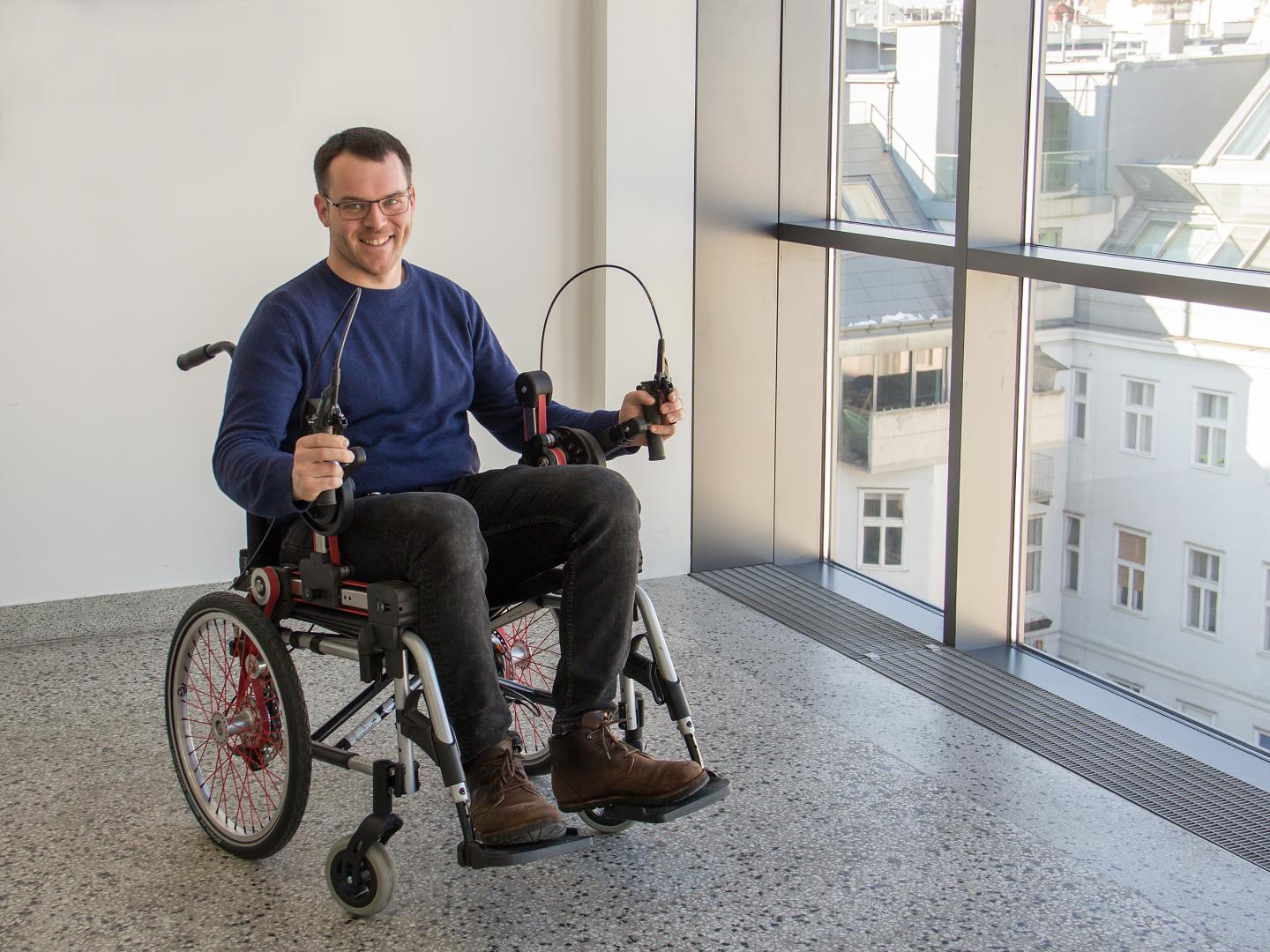Using biomedical modelling, researchers at TU Wien have developed a completely new type of wheelchair; specially designed handles make the drive more efficient and ergonomic

Credit: TU Wien
Anyone who thinks that a wheelchair is a simple piece of equipment with no room for improvement is sorely mistaken. The research team for biomechanics and rehabilitation engineering at TU Wien (Vienna) has now developed a completely new drive system. The wheelchair is not moved via a handrim on the wheel, but with the help of a newly designed hand gear. This is more ergonomic and far better suited to the natural movement patterns of the upper body. The new wheelchair type has recently been registered for a patent, now the researchers are looking for industrial partners.
Joints are not made for wheelchair use
“The motion sequence when using a wheelchair is usually quite unnatural”, explains Prof. Margit Gföhler (Institute of Engineering Design and Product Development, TU Wien). “Moving a wheelchair using a conventional handrim puts your joints into extreme positions, which our bodies are simply not made for.” This is the reason why many people suffer from wheelchair-induced joint injuries and joint pain.
To change this, Margit Gföhler and her research team developed a biomechanical computer model to analyse various motion sequences of the upper body. “We considered the following questions: What would be the optimal motion sequence? What movements are best suited to the way in which the shoulders and arms work?” says Gföhler.
The motion sequence determined to be best suited in the biomechanical simulations was then implemented in a mechanical drive system. The result is a wheelchair driven by two hand gears. During each revolution, the levers change their length, creating an egg-shaped movement rather than a circular movement. The hand gears are mounted on the wheelchair’s armrests and drive the rear wheels via a toothed belt. As a result, the wheels can be made smaller than usual. Thanks to its compact dimensions, the hand gear does not make the wheelchair wider or larger, so the drive is suitable for everyday indoor use.
Better angles, less effort
The new wheelchair technology underwent a range of tests, some of them in collaboration with the ‘Weißer Hof’ rehabilitation centre in Klosterneuburg, Austria. “The responses were very positive: people were pleased that the joints no longer have to move outside the natural angular range and that the wheelchair enables continuous movement without interruption”, relates Margit Gföhler. Spirometric tests were also carried out: these involve analysing the breath to measure how strenuous a certain activity is. The new drive technology enables the same speeds to be reached as before but with significantly reduced effort.
Margit Gföhler is optimistic, “Our new wheelchair concept really could improve many people’s quality of life.” “We hope to find a partner in the industry soon to develop our design into a commercial product.” The new wheelchair drive system has now been registered for a patent with the help of TU Wien’s Research and Transfer Support office.
###
Contact:
Prof. Margit Gföhler
Institute of Engineering Design and Product Development
TU Wien
Getreidemarkt 9, 1060 Vienna, Austria
Tel.: +43-1-58801-30615
[email protected]
Media Contact
Florian Aigner
[email protected]
43-155-801-41027
Original Source
https:/




